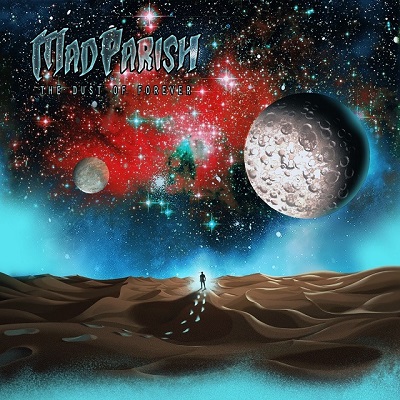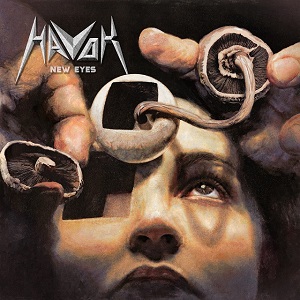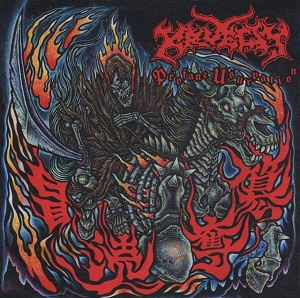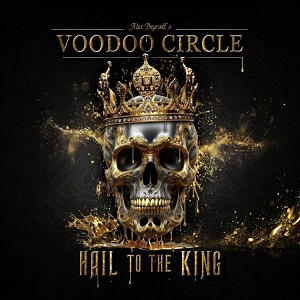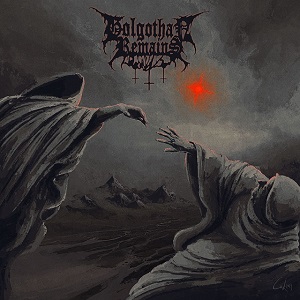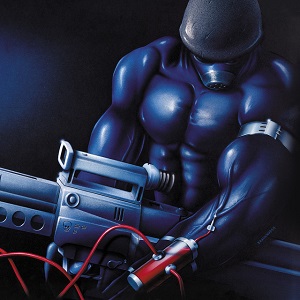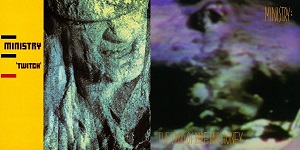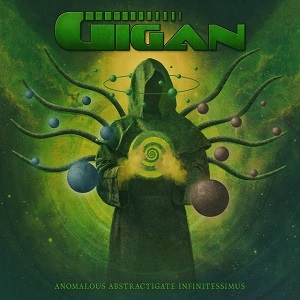BILLY GIBBONS – “I’m Not Mad About It”
September 19, 2018, 6 years ago

Like yerself some Mescalero? How about La Futura? Well, then you’re gonna love Billy Gibbons’ second solo album, The Big Bad Blues. To be sure, the ZZ Top legend is back for a second time on Concord Records, following up the Latin-flavoured Perfectamundo with an album of grinding blues covers and blues-soaked originals. And seriously, with the production prowess of longtime collaborator Joe Hardy (who also plays bass), there’s a cozy kinship with the last two ZZ albums—and to my mind, that’s just fine.
“The ‘easy in’ was the unexpected success of that excursion into Cubana-land,” explains Gibbons on what is in fact a pretty quick return as a solo dude, Perfectamundo coming out in 2015. “And it prompted Concord Records president Mr. John Burk to step forward. He offered to pick up the option on a follow-up solo disc and he immediately said, ‘We’ve done our best to pull inspiration from Latin styles—how about returning back to the blues?’ And I said, ‘Well, that’s where we started. It won’t be… I’m not mad about it.”
The above-stated consistency with both Perfectamundo and what ZZ’s been doing lately is explained by Billy with, unsurprisingly, a pretty cool story…
“There’s an interesting aside, which I think might play well into answering that question,” begins Gibbons, who has more stories than pretty much anybody in rock. “I was speaking with Steve Cropper, one of the great guitarists, who I’ve held a high admiration forever, and one afternoon I had the pleasure enquiring. I said, ‘Steve, how did you guys think to design the continuity of those greats Stax records?’ He said, ‘Well, it’s interesting, that question.’ He said, ‘I wish I could take credit for having dreamed it up. So the reality is the Stax recording studio was in a very bad part of Memphis. And in order to avoid having our equipment stolen, we hired a guy to come in and nail everything to the concrete floor, from the amplifier to the organ to the mic stand. Nothing ever changed. Which meant every record had a continuity to it.’ And Joe Hardy, who I’ve worked with from even going way back to the Memphis days, and our Texas engineer, Mr. Moon, they said, ‘Why don’t we use a page out of Steve Cropper?’ The Cropper story. We’re going to establish a sound and we’re not going to change anything. When the housekeeper comes in to clean at night, we’ll give her strict instructions: don’t touch anything; you can sweep around, but don’t move anything. And I believe that resulted in a rather pleasing song to song… you’re not getting the carpet yanked out from under you.”

“But Joe’s a very accomplished technician,” continues Gibbons. “He plays with expertise on a number of instruments. My favourite is how he fits in with the bass. And I think it’s fair to say that it was a match made in heaven to have Greg Morrow stumble through the studio. Joe and Greg, both being from Memphis, have worked together for years and that combination set up an automatic rhythm section that was so solid. I didn’t have to do much but step into it. And Hardy and Moon have the gift of envisioning the importance of a well-placed microphone. They go back to the days when you were lucky to have two microphones in the studio and if that was the limitation, you better know where to put them.”
Look also for Billy’s egregiously dirty axe tones all over this record. Although it’s not talked about lots, Billy’s known for his dismissal and dislike for acoustic guitars, and there’s something demonstrative toward that predilection in how insanely electric he always sounds, even when laying back and popping in licks, like he does on this record.
On the subject of tonality, Billy’s never accepted banality, saying that for this record, “We’ve been complimented with the solidity and stridency of the guitar tones that were allowed to creep in. And I credit a lot of that to two amplifiers. I’ve got an original Marshall 18-watt from 1966. It’s quite rare. It has two 12s rather than two tens. And the two 12s version, it was in a very tiny box. They called it the mini. But the speakers are stamped Silverdale Road. And that was the address of what later became Celestion speaker. So we had this very early Marshall and we combined it with the sound of the brand new Magnatone. We’re using the 50-watt all tube Magnatone and those two became the go-to to retain the sound. And as I pointed out, one of the points that we held in high regard was some measure of continuity. We didn’t want to have track one sound this way and track two sound the other way. It was intended to maintain a vigilance toward some semblance of continuity.”

(Photo by: Andrew Stuart)
Over to lyrics, of course there are the covers, but there’s also an original called “Missin’ the Kissin’,” which has none other than Billy’s missus penning the words of wisdom placed atop this wide-angled “La Grange-“-like shuffle.
Explains Billy, “The engineers were peeking through the control room into the lounge and they said, ‘Well, that Gilligan, she is really studious. She’s scribbling away. What is she looking at? Is it the Chanel catalog or the Gucci catalog?’ I said, I don’t know. Well she took a break and she said, ‘Hey, check this out.’ This looks like some inviting prose. She’s actually coming up with rhyming schemes. I said, well, let’s put it to some music. And I said, ‘Missin’ your kissin’… that’s a girl thing.’ She certainly knows how to call it toward the girls. I said, I just hope that she’s writing it about me.”
With The Big Bad Blues so sonically soaked in tradition, I asked Billy if any of these originals had been mooted for ZZ albums along the way, only to be stuffed into his back pocket for later.
“Well, of course the blues covers, each of us have years of familiarity with that, but at the same time I was having a blast with just the invitation: ‘Hey, make up some good blues stuff.’ And it really gave us the opportunity to retain a measure of freshness. Most of it’s brand-new stuff that was created just for the record. There was one… Greg Morrow and I and Joe have a deep admiration for a lot of the music that we acknowledge having come out of New Orleans. So there’s the song ‘Second Line,’ which is a New Orleans term. I really enjoyed Greg delivering a beat that defies description. You’d think he was shuffling and then he’ll go into a hard 4/4. So many of the recordings that we learned from, back in the day there wasn’t a hard line of you gotta play a shuffle or you gotta make it a 4/4—you can’t do both. Look into the early Chuck Berry and Bo Diddley records—they’re kind of in between.”

(Photo by: Blain Clausen)
And who’s got the hardest job in a shuffle?
“Oh, definitely the drummer,” figures Billy. “But if you’re from Texas, you got it made. The Texas shuffle, that’s the keenest beat you could ever hope to step into.”
Elsewhere, in typical surreal Reverend Willie G fashion, the Muddy Waters cover, “Rollin’ and Tumblin’” turns out to be the most heavy metal thing on the album. Big laugh from Billy on that one, to which he adds, “As mentioned, this project started off with a bunch of familiar faces. We all stepped into the studio and we started each session playing some blues standards. And to really kick things off, I remember the good news was that Joe Hardy had the tape machine rolling after we had laid down this crazy version of ‘Rollin’ and Tumblin’.’ I liked your reference (laughs). It’s near heavy metal.”
Equally enigmatic is “Hollywood 151,” which Gibbons helps clarify: “Oh, that one, there was a duet, two guys, a bass player and a guitarist, and they were Mexican guys, and they had a drum machine. The name of their band was Hollywood 151, and of course it was a direct reference to Bacardi rum. 151 proof is pretty up there (laughs) And we loved hearing these guys. They played at a honky tonk little cocktail bar and they played so righteously that it never seemed to have gotten too far away from my consciousness. I always loved these guys and so I said, let’s write a song as a tribute to the inspiration that they provided.”
In closing I figured we’d broach the subject of ZZ, and whether Billy’s solo career meant curtains for the original trio. “No, not at all. Frank and Dusty are wailin’ away in the other studio. We’ve got two rooms down there in Texas and they would peek in on the solo project every now and again. They were grinning. They said, ‘Great. Keep at it. While you’re out beatin’ the boards, we’re gonna take a holiday’ (laughs). But no, they’ve started working on some really interesting starter pieces for some new ZZ Top material.”
(Top photo by: Andrew Stuart)

